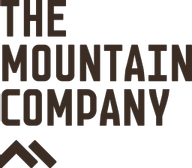When to Go
It is clearly impossible to tell you exactly what the weather will be for your chosen holiday on your specific travel dates, as weather is naturally not a constant. Based on our first hand knowledge and experience we operate our trips when the historical weather patterns and conditions are at their most suitable at that destination.
Weather will also be affected by altitude e.g. temperatures decrease with altitude by around 1 degree Celsius for every 200m increase in altitude. You will experience a variety of conditions on one of our holidays as mountains are notorious for creating their own, localized and unpredictable weather conditions. As any experienced outdoors person would say, "there is no such thing as bad weather, just bad clothing".
The Himalaya have four seasons: winter from December to February, Spring from March to May, Monsoon from June to August and Autumn from September to November. You can visit at any time of the year however the two main trekking seasons are Spring (also known as pre monsoon) and Autumn (also know as post monsoon).
October is the most popular trekking month in the Himalaya followed closely by November. These months normally have dry weather with clear blue skies and sun. It is possible to trek during December although the temperatures will be colder. Late February is at the tail end of winter with temperatures still cold at higher altitudes although this is a good time to visit places at a lower elevation such as the Annapurna middle hills. As the year progresses into March and April the weather warms up, this is a good time to trek over the high passes as the winter snows melt away.
The trekking season for Karakoram is over the summer due to the area not being influenced by the monsoon to the same extent as Nepal. In Pakistan, the optimal months to complete K2 Base Camp, K2 Base Camp & Gondogoro La and Snow Lake & Hispar La are in July and August.

